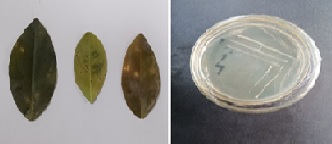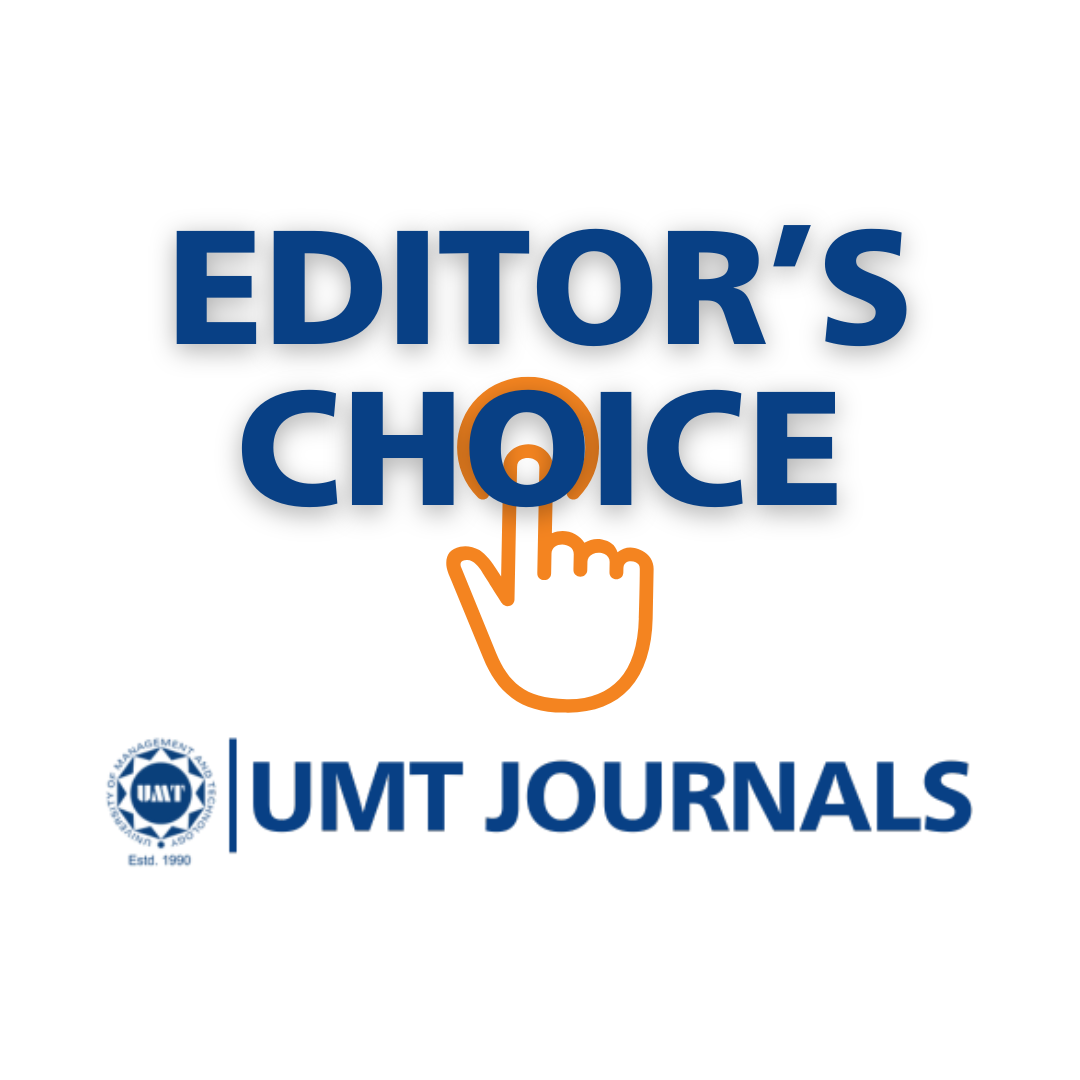Genetic Variability of Xanthomonas citri pv. citri in South Punjab, Pakistan
Abstract
 Abstract Views: 0
Abstract Views: 0
Background. Citrus is an important nutritious fruit that belongs to the family Rutaceae, comprising a large group of trees and shrubs. Citrus constitutes about 40% of all fruits grown in Pakistan. The total contribution of kinnow, grown in Pakistan, in the international market is US$ 222 million. In Pakistan, citrus production has been recorded up to 2.0 million metric tons. There are multiple abiotic and biotic factors involved in the low productivity of citrus in the country. Moreover, citrus canker (caused by the pathogen Xanthomonas citri pv. citri) has been the major threat for citrus production in Pakistan for the last 10 years. The current study aims to document the disease incidence of citrus canker along with the characterization of citrus canker causal organism.
Method. Samples exhibiting disease symptoms (such as small pimple-like spots about 1 mm in diameter and yellow in colour) were collected from the target areas. After isolation and purification, the samples were subjected to PCR analysis for molecular identification and characterization through SDT and MEGA11 software packages.
Results. A total of 112 samples were collected from different sites in South Punjab, Pakistan. The bacterial colonies were small and yellow in color, which turned pink after staining. Bubble formation was also observed after conducting biochemical tests. Genetic analysis showed that Xanthomonas citri pv. citri Multan isolate has 98.91% nucleotide identity with Indian, Korean, Chinese, and South African isolates.
Conclusion. The study underlines the emerging pathogen population of citrus canker that could help to manage this disease.
Downloads
References
Awan MZ, Ishfaq M, Hafiz IA, Ijaz M, Ayyub CM. Incidence of citrus canker in Barani area at Chakwal. Presented at: Proceedings of the 1st International Seminar on Citrus; December 2–5, 1992; Pakistan.
Siddique MI, Garnevska E. Citrus value chain: a survey of Pakistan citrus industry. In: Egilmez G, ed. Agric Value Chain. BOD; 2018:37–56. https://doi.org/10.5772/intechopen.70161
Mal B, Singh SS, Ghodake R. Investment in agricultural research for sustainable development in Asia and the pacific. Food and Agriculture Organization of Pakistan. https://www.apaari.org/web/wp-content/uploads/2017/Country%20Status%20Report_29-7-2017_2.pdf
Ayub M, Jahangir HS, Mumtaz K, Amin M. Pathogenic variation and host range of X. campestris pv. citri isolates. Pak J Phytopathol. 1996:e18.
Ference C, Gochez A, Behlau F, Wang N, Graham J, Jones JB. Recent advances in the understanding of Xanthomonas citri ssp. citri pathogenesis and citrus canker disease management. Mol Plant Pathol. 2018;19:1302–1318. https://doi.org /10.1111/mpp.12638
Schaad NW, Postnikova E, Lacy G, et al. Emended classification of Xanthomonas pathogens on citrus. Papers in Plant Pathol. 2006:e96. https://doi.org/10.1016/j.syapm.2006.08.001
Ali S, Hameed A, Muhae-Ud-Din G, Ikhlaq M, Ashfaq M, Atiq M, Ali F, Zia ZU, Naqvi SAH, Wang Y. Citrus Canker: A Persistent Threat to the Worldwide Citrus Industry—An Analysis. Agron. 2023;13:1112. https://doi.org/10.3390/agronomy13041112.
Izadiyan M, Taghavi SM, Farahbakhsh F. Characterization of Xanthomonas citri subsp. citri isolated from grapefruit in Iran. J Plant Pathol. 2018;100:257–267. https://doi.org/10. 1007/s42161-018-0081-3
Stall RE, Seymour CP. Canker, a threat to citrus in the Gulf Coast states. Plant Dis. 1983;67(5):581–585.
Tomilova OG, Shternshis MV. The effect of a preparation from Chaetomium fungi on the growth of phytopathogenic fungi. Appl Biochem Microbiol. 2002;42:67–71. https://doi. org/10.1134/S0003683806010108
Bergey SA. Bergey’s Manual of Determinative Bacteriology. 9th ed. Philadelphia, PA: Williams and Wilkins; 1984.
Iqbal MN, Anjum AA, Ali MA, et al. Assessment of microbial load of un-pasteurized fruit juices and in vitro antibacterial potential of honey against bacterial isolates. Open Microbiol J. 2015;9:26–31. https://doi.org/10.2174/ 1874285801509010026
Braithwaite J. Setting standards for restorative justice. Br J Criminol. 2002;42:563–577. https://doi.org/10. 1093/bjc/42.3.563
Al-Dulaimi F, AL-Kaisse AA, Al-Rubaye L, Abdulwadood M. First report of citrus bacterial canker caused by Xanthomonas citri pv. citri in Iraq. Res J Biotechnol. 2018;12:24–31. http://dx.doi.org/10.24126/jobrc.2018.12.2.534
Ausbel FH, Brent R, Kingston RE, Moore DD. Current Protocols in Molecular Biology. 4th ed. Canada: Wiley; 1994.
Tamyra K. Akamatsu H, Asami K, Habitat conditions of Anaphalis margaritacea subsp. yedoensis (Franch. et Savat.) Kitam. on Asakura area of Maruyamagawa River. Humans Nat. 2007;18:45–49.
Gottwald TR, Sun X, Riley T, Graham JH, Ferrandino F, Taylor EL. Georeferenced spatiotemporal analysis of the urban citrus canker epidemic in Florida. Phytopathology. 2002;92:361–377. https://doi.org/10. 1094/phyto.2002.92.4.361
Das AK. Citrus canker-a review. J Appl Horti. 2003;5(1):52–60.
Mohammadi M, Mirzaee MR, Rahimian H. Physiological and biochemical characteristics of Iranian strains of Xanthomonas citri pv. citri, the causal agent of citrus bacterial canker disease. J Phytopathol. 2001;149(2):65–75. https://doi.org/10. 1046/j.1439-0434.2001.00570.x
Shehzadi I, Naz S. Morphological, biochemical and genetic characterization of citrus canker pathogen (Xanthomonas citri) from citrus cultivars of punjab, pakistan. J Ani Plant Sci. 2019: 29(1):117–124
Park DS, Hyun JW, Park YJ, et al. Sensitive and specific detection of Xanthomonas citri pv. citri by PCR using pathovar specific primers based on hrpW gene sequences. Microbiol Res. 2006;161:145–149. https://doi. org/10.1016/j.micres.2005.07.005

Copyright (c) 2024 Dr. Hasan Riaz

This work is licensed under a Creative Commons Attribution 4.0 International License.
BSR follows an open-access publishing policy and full text of all published articles is available free, immediately upon publication of an issue. The journal’s contents are published and distributed under the terms of the Creative Commons Attribution 4.0 International (CC-BY 4.0) license. Thus, the work submitted to the journal implies that it is original, unpublished work of the authors (neither published previously nor accepted/under consideration for publication elsewhere). On acceptance of a manuscript for publication, a corresponding author on the behalf of all co-authors of the manuscript will sign and submit a completed the Copyright and Author Consent Form.









